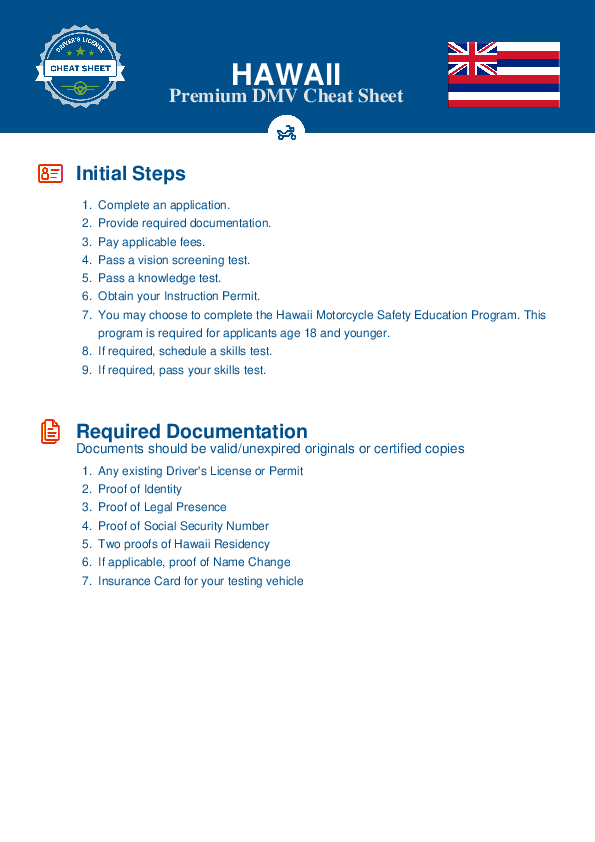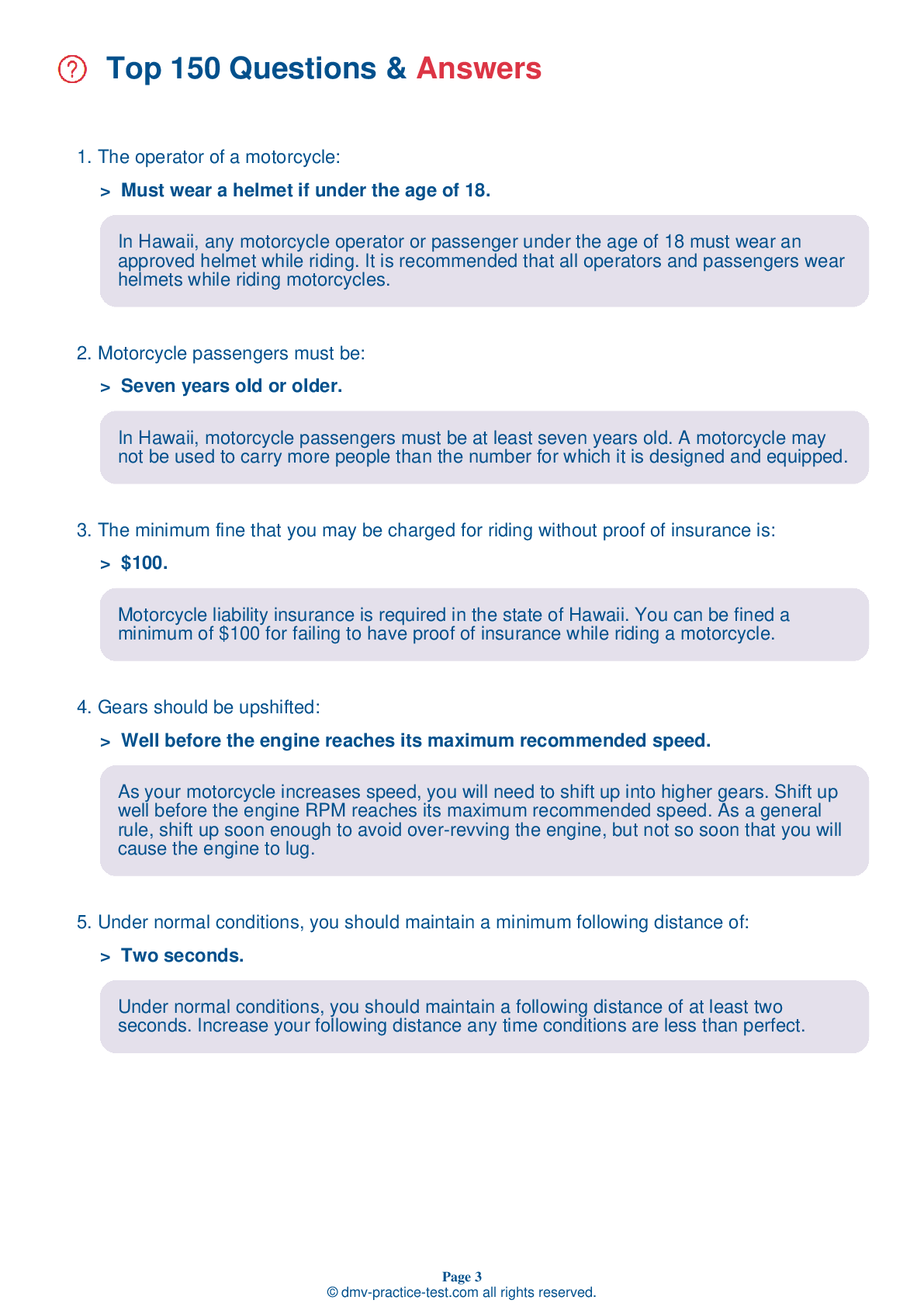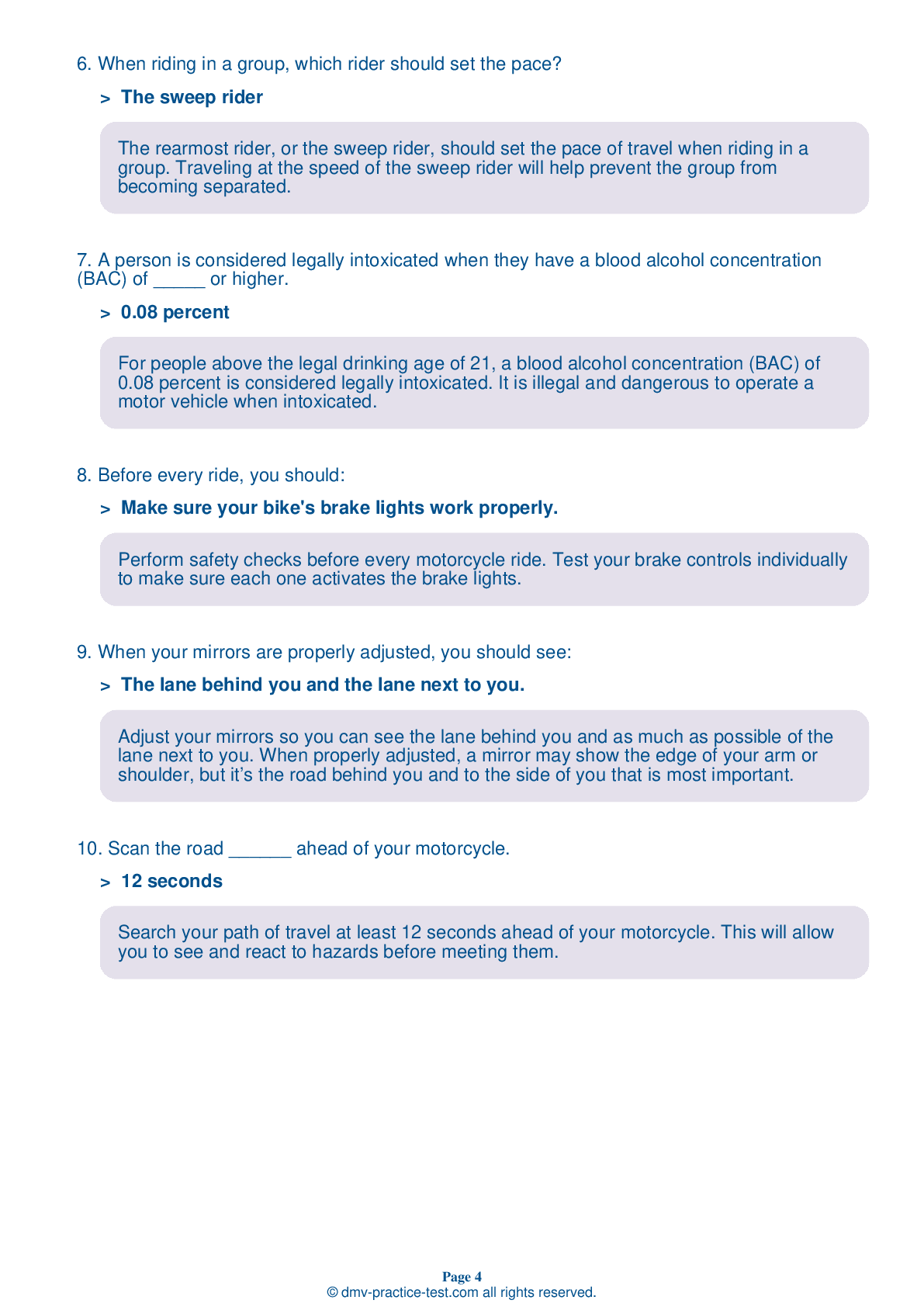FREE Hawaii DMV Motorcycle Practice Test 2024 Page 2 of 4
This is the free Hawaii Motorcycle License Practice Exam. This test consists of 25 Hawaii-specific multiple-choice questions. All of the information for this exam came from the Hawaii Motorcycle Operator Manual. You should read the manual completely before taking this test. The exam will test your knowledge of road rules as well as special situations that may arise while riding a motorcycle. You must correctly answer 20 out of 25 questions to pass this practice test. It's important to keep in mind that passing this exam does not guarantee that you will pass the state exam. Each question can have four different answers. After carefully reading the question and answers, choose the most accurate answer. Each question has only one possible answer. The hint feature can help you find the right answer if you need it. There are no hints on the official state exam. If you answer the question correctly, you'll move on to the next question. If you select the incorrect option, the correct option will be displayed alongside an explanation.
7 . Taking a turn too fast:
Taking a turn too fast is dangerous. If you cannot hold the turn, you may end up turning into another lane or even off of the road entirely. Use caution when taking a turn.
8 . In a normal turn:
During normal turns, the motorcycle and the rider should be leaning together at the same angle. In slow, tight turns, only the motorcycle should lean while the rider keeps their body straight up.
9 . When may a motorcyclist pass between two cars traveling in the same direction?
Motorcyclists must obey all traffic laws, signs, and signals in the same way as other drivers. Motorcyclists are prohibited from passing between two other vehicles going in the same direction unless there is an unobstructed traffic lane available to permit safe passing.
10 . The single most effective thing you can do to improve your chances of surviving an accident is:
The single most important measure you can take to reduce your risk of injury or death in the event of an accident is to wear a helmet.
11 . A motorcyclist should attempt to avoid obstacles on the roadway. If avoiding an obstacle is not possible, the motorcyclist should:
If you are unable avoid an obstacle and must instead ride over it, slow down and approach the obstacle at as close to a 90-degree angle as possible.
12 . This sign means:

A regulatory sign displaying a red circle with a red slash through the middle indicates that a specific action is prohibited. Right turns are not permitted where this sign is posted.
See the exact questions that will be on the 2024 Hawaii DMV exam.
99.2% of people who use the cheat sheet pass the FIRST TIME
Jeneen was tired of paying $5/gallon. She got herself a scooter that required the motorcycle license. She studyed the motorcycle test cheat sheet and passed her test the next day!
Christopher tells us how he knew nothing prior to obtaining the motorcycle study guide, and he only got one question wrong because he clicked on the wrong answer by mistake.



